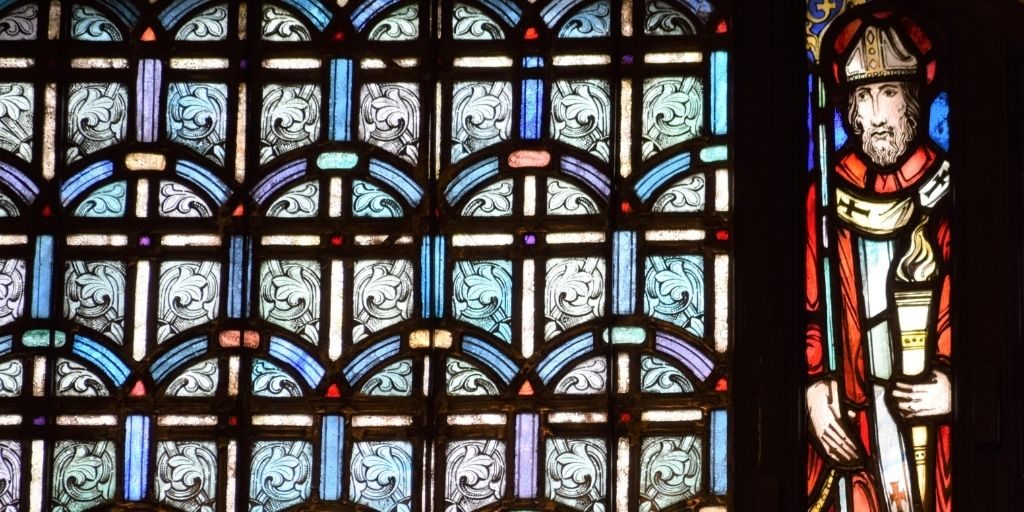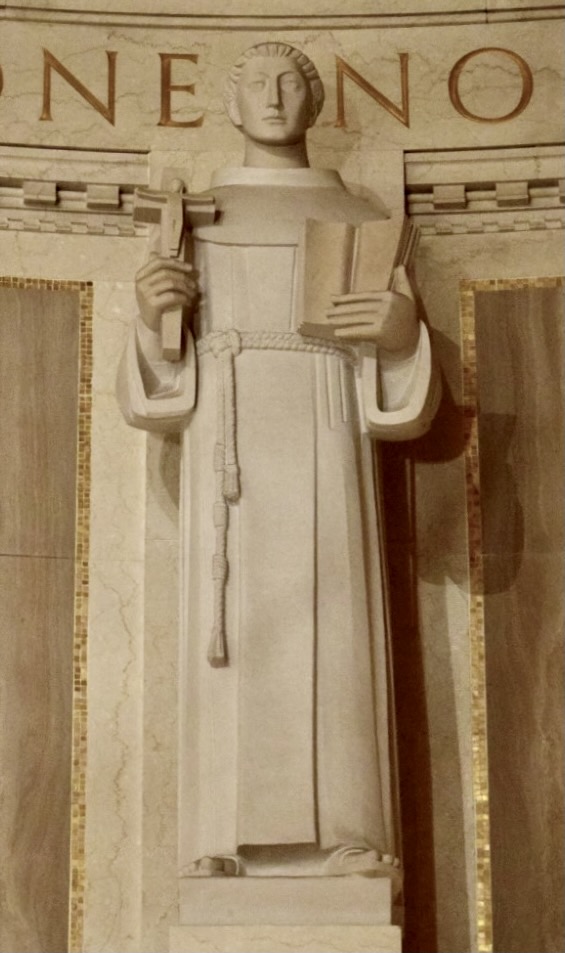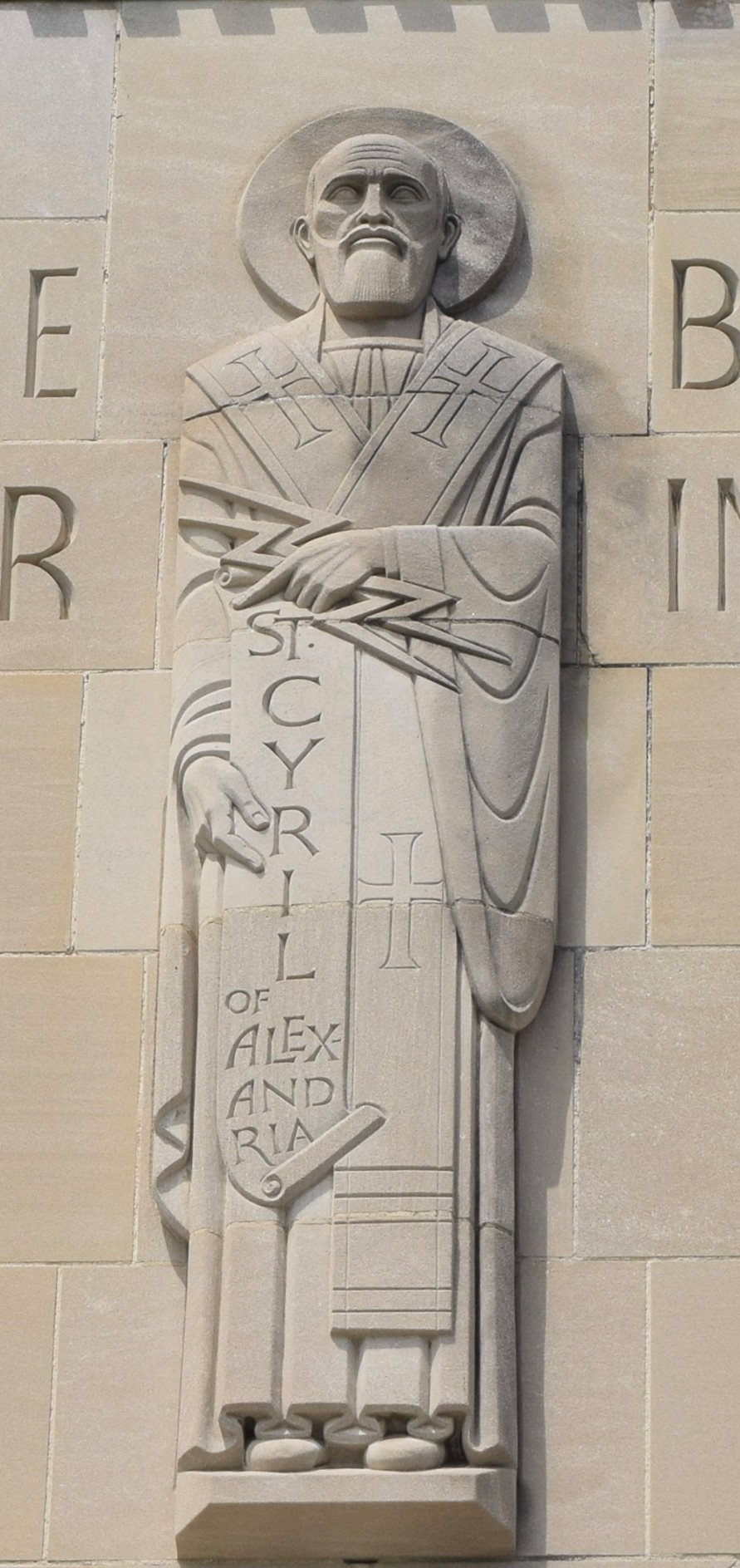
Every June, the Church celebrates many saints with feast days and memorials, honoring their unique contributions to the faith and reflecting on their lives of holiness. From the man who defeated Gnosticism to the patron saint of lost things, they each have something to teach us. In today’s post, we invite you to read about three saints celebrated this month and why you should know their stories.

St. Anthony of Padua – June 13
Born in 1195, St. Anthony studied in France and Italy and spent time with the Canons of St. Augustine before eventually joining the Franciscan Order. At the outset of his time there, he served in positions of obscurity. But one day, something happened that changed his life forever.
Anthony was attending the ordination ceremony of both the Franciscans and the Dominicans. By some communication error, each order thought the other would supply the speaker and consequently, neither had a speaker prepared. In desperation, they asked Anthony to fulfill the task. At first, he protested – he was, after all, only the dishwasher and janitor – but when he realized that no one else would rise to the task, he agreed and gave a speech on the spot.
All in attendance were amazed at Anthony’s eloquent preaching, including St. Francis, who immediately granted him permission to begin teaching in an official capacity. With St. Francis’ blessing, Anthony started a highly effective preaching mission, often speaking in outdoor settings, without using notes. His persuasive style convinced many people to turn away from their sin, to forgive their enemies, and live more pious lives. Those in government enacted measures against usury, drunks became sober, and criminals turned from lawlessness. Sadly, Anthony’s tendency to overwork and health problems ultimately took his life; he passed away in a Poor Clare convent at the young age of 36, while on his way home to Padua. Today, he is known as the patron saint of lost things.

St. Cyril of Alexandria – June 27
The nephew of the Bishop of Alexandria, St. Cyril was born in 376 A.D. and grew up in an era of rebirth for Christianity in Egypt’s capital. In 412, Cyril took his uncle’s position as bishop, and soon caused a stir with his strong opinions and reactive temper. While he zealously defended what he believed in, he often acted rashly. He closed the churches of the Novatian heretics, fell into spats with civic authorities, and battled paganism with force.
Over the course of his life, Cyril became more even-tempered and took the helm in the fight against Nestorianism, a heresy promulgated by Nestorius, who served as archbishop of Constantinople in 428 A.D. This heresy purported that Jesus Christ’s human and divine natures were separate; that while Christ was indeed human and God, His body only served as a shell for His divine spirit. In Nestorius’ account, the child Mary gave birth to was Jesus, but not the eternal God of John 1:1.
Cyril refuted these claims, explaining how this heresy defied the truth of the Incarnation and fatally undermined the doctrine of redemption. As a result of Cyril’s efforts, Nestorius was condemned at the Council of Ephesus in 341. Though Cyril was far from perfect, he is proof of how God can take anyone and use them for His divine purpose. He passed away on June 27, 444.

St. Irenaeus – June 28
Though little is known about St. Irenaeus’ formative years, it is believed that he was born in Greece in the second century and eventually moved to a Roman outpost in Gaul called Lyons. There, the church endured brutal persecution by emperor Marcus Aurelius, and when their bishop was martyred, Irenaeus assumed his position.
During Irenaeus’ lifetime, Gnosticism was a pervasive heresy threatening the church. With a mixture of beliefs stemming from Greek philosophy, pagan rites, and mythology, Gnosticism presented an occult-like spirituality which seduced countless Romans. For the Gnostics, secret religious knowledge was required for salvation. Gnostics also embraced spiritual-physical dualism, insisting that human beings needed to be freed from the inherently evil physical world in order to pass into the spiritual realm.
Though Irenaeus was known for having a gentle disposition, he was uncompromising in defending the truth. Throughout his lifetime, he wrote five books refuting the claims of Gnosticism, arguing that God’s creation was not inherently corrupt, but rather, that human sin was responsible for evil in the world. Thanks to his tireless efforts, Gnosticism eventually lessened in popularity and lost influence. Today, he is recognized as one of the Church’s first systematic theologians.
Sources:
Butler’s Lives of Saints, ed. Bernard Bangley.
Rohling, Geraldine M., PhD, MAEd. The Basilica of the National Shrine of the Immaculate Conception: Guide and Tour Book. Washington, D.C.: Basilica of the National Shrine of the Immaculate Conception, 2018.
“St. Cyril of Alexandria,” Franciscan Media.
The Way of Saints, Dr. Tom Cowan.


